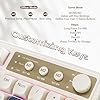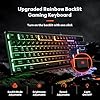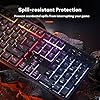Table of Contents
Introduction to Developing Efficient Piano Technique
Mastering the piano requires not only musical sensitivity and interpretative prowess but also, crucially, the development of a solid technical foundation. Efficient piano technique involves the integration of finger strength, agility, and precise timing, but achieving this can be a challenging endeavor. In this introduction, we will explore essential strategies to cultivate a robust piano technique that fosters ease and effectiveness in playing, aiming to accelerate learning while minimizing the risk of injury. Understanding and implementing these foundational techniques are key to unlocking the full potential of your piano playing abilities.
Focusing on Finger Dexterity
Developing finger dexterity is crucial for playing the piano efficiently. This involves various exercises that enhance the agility, speed, and accuracy of your fingers on the keyboard. Start with scales and arpeggios, playing them slowly at first, then gradually increasing the speed while maintaining precision. It’s important to ensure that each finger moves independently and without tension.
Yamaha Arius Series 88-Key Weighted Action Digital Piano for Aspiring Musicians, CFX Concert Grand Piano Voice, 3-Pedal Unit, Bench Included, Classic Upright Design, Dark Rosewood YDP145R
17% OffYamaha Arius Series 88-Key Weighted Action Upright Digital Piano, CFX Concert Grand Piano Voice, 3-Pedal Unit, Bench Included, Classic Upright Design, Black YDP145B
17% OffDonner Digital Piano Keyboard Velocity-Sensitive 88 Keys with Removable Piano Stand, Compact Beginner Home Electric Piano with Split Mode, LED Digital Tube for Display, and Triple Pedal DEP-08
$279.99 (as of November 22, 2025 08:02 GMT -08:00 - More infoProduct prices and availability are accurate as of the date/time indicated and are subject to change. Any price and availability information displayed on [relevant Amazon Site(s), as applicable] at the time of purchase will apply to the purchase of this product.)Donner DEP-1S Piano Keyboard 88 Keys, Beginner Digital Piano with 88 Key Velocity-Sensitive Keyboard, Record, Bluetooth, Chord, Bundle With Piano Stand, Piano Stickers, Sustain Pedal, Retro Wood Color
$219.99 (as of November 22, 2025 08:02 GMT -08:00 - More infoProduct prices and availability are accurate as of the date/time indicated and are subject to change. Any price and availability information displayed on [relevant Amazon Site(s), as applicable] at the time of purchase will apply to the purchase of this product.)Hanon exercises are also beneficial for improving dexterity. These exercises focus on repeating patterns that move up and down the keyboard, which helps in building strength in weaker fingers, particularly the fourth and fifth fingers. Incorporating a metronome into these exercises can help maintain a consistent tempo and further sharpen your timing and speed control.
Focusing on Finger Strength
Building finger strength is equally important for the advanced repertoire, which involves more intense key presses and sustained passages. To develop strength, practice playing with firm but relaxed hands, focusing on pressing the keys with enough force to produce a clear, vibrant sound without straining the fingers or the wrist.
Exercises that involve holding down one key while playing others can also increase finger independence and strength. These are often found in advanced pieces and studies but can be practiced separately. For example, try maintaining pressure on a specific key with your third finger while playing a melody or a scale with the other fingers.
Furthermore, using weighted keys or a digital piano with adjustable touch sensitivity can aid in developing finger strength. Training on a variety of keyboard types and settings can adapt your fingers to different resistance levels, preparing them for any piano.
Logitech MK270 Wireless Keyboard and Mouse Combo for Windows, 2.4 GHz, 8 Multimedia Keys, PC, Laptop, Wireless Keyboard Compact Mouse Combo - Black
33% OffAULA S99 Gaming Keyboard, Wireless Computer Keyboards, Tri-Mode Bluetooth/2.4GHz/USB-C Custom Creamy Keyboard with Number Pad, RGB Backlit Media Knob Cute Programmable Keyboard for PC Gamer - Green
15% OffRedragon K521 Upgrade Rainbow LED Gaming Keyboard, 104 Keys Wired Mechanical Feeling Keyboard with Multimedia Keys, One-Touch Backlit, Anti-Ghosting, Compatible with PC, Mac, PS4/5, Xbox
15% OffWireless Keyboard and Mouse Combo, Full Size Silent Ergonomic Keyboard and Mouse, Long Battery Life, Optical Mouse, 2.4G Lag-Free Cordless Mice Keyboard for Computer, Mac, Laptop, PC, Windows
$25.99 (as of November 22, 2025 07:20 GMT -08:00 - More infoProduct prices and availability are accurate as of the date/time indicated and are subject to change. Any price and availability information displayed on [relevant Amazon Site(s), as applicable] at the time of purchase will apply to the purchase of this product.)Practicing Scales and Arpeggios Daily
Developing your piano technique requires diligent practice, particularly with scales and arpeggios, which are fundamental to mastering the instrument. Practicing these elements daily enhances finger strength, improves hand coordination, and fosters a deeper understanding of musical keys.
Scales are sequential notes within a particular key and are essential for building finger dexterity and speed. To practice scales efficiently, start by playing them slowly, focusing on evenness in tempo and dynamic level. Gradually increase the speed as you gain comfort and accuracy. It’s important to use a metronome to keep your tempo consistent. Practice scales in all twelve keys, utilizing both major and minor forms to develop a comprehensive ability.
Arpeggios, which are chords played one note at a time, help in mastering the transitions between notes and training your hands to move smoothly across the keyboard. Like scales, start practicing arpeggios slowly and build up speed gradually. Focus on maintaining a fluid motion without any harshness in the sound. Practicing arpeggios in different inversions across various keys aids in understanding chordal structures and enhances hand flexibility.
Incorporating both scales and arpeggios into your daily practice routine ensures you work consistently on essential technical elements, eventually making complex pieces more accessible and improving your overall piano playing skills.
Developing Smooth Hand Transitions
Achieving smooth hand transitions is critical to seamless piano playing, especially for complex compositions where both hands move independently over differing parts of the keyboard. Here are key aspects to focus on:
Effectively moving between different areas of the piano requires anticipation of upcoming notes and strategic planning of hand positions. Practicing the skill of reading ahead in the music helps pianists prepare their movements in advance, reducing awkward and rushed transitions.
Developing finger independence is crucial for smooth hand transitions. Exercises designed to strengthen individual fingers can enhance agility and control, making it easier to move smoothly from one position to another without tension.
Practicing scales and arpeggios can significantly improve hand transitions over the keyboard. Emphasis should be placed on fluid motion and even tempo across transitions, fostering a natural flow as hands cross over or switch positions.
Specific exercises that focus on hand coordination can greatly assist in developing smooth transitions. Exercises such as the parallel and contrary motions of scales where both hands work together or in opposition help in internalizing synchronized hand movements.
Practicing transitions slowly with the aid of a metronome ensures that each movement is deliberate and precise. This method helps in building muscle memory and confidence in hand transitions, progressively increasing speed without sacrificing accuracy.
The hand-over-hand technique, often used in glissandos or expansive arpeggios, requires practice to execute smoothly. Starting slow, ensuring each hand knows its position and movement before speeding up, can lead to mastery of this visually and technically impressive technique.
Application of movements in actual musical pieces reinforces learning. Integrating a variety of repertoire that challenges different types of hand transitions can stimulate improvements and adaptability in hand movement across the keyboard.
How to Improve Speed Without Losing Accuracy
To develop faster piano playing skills while maintaining accuracy, follow these methods:
Gradual Increase in Tempo: Start by playing the pieces slowly. Use a metronome to ensure consistency and gradually increase the speed only when you can play without mistakes. This methodical approach avoids instilling bad habits and errors.
Segmentation: Break down the pieces into smaller, manageable segments. Focus on mastering each segment at a high speed without errors before combining them. This builds muscle memory and a deeper understanding of the piece.
Fingering Techniques: Use efficient and consistent fingering. Good fingering is crucial for playing quickly and accurately. Always follow the suggested fingerings and adjust only if necessary to suit your hand better.
Relaxation: Avoid unnecessary tension in your hands, arms, and shoulders. Tension slows you down and can lead to injuries. Practice consciously relaxing your muscles while playing to improve speed and prevent fatigue.
Synchronization Exercises: Practice hand independence exercises to improve the synchronization between your hands. Proper coordination is essential for playing complex rhythms and maintaining accuracy at higher speeds.
Regular, Focused Practice: Consistency is key in mastering any skill. Schedule regular practice sessions and set clear, achievable goals for each session. Focused practice helps identify areas that need improvement, allowing for efficient skill development.
Visualization and Mental Practice: Away from the piano, visualize playing the pieces. Mental practice can reinforce muscle memory and make actual playing more secure and confident.
Seek Feedback: Regularly play for others or a teacher and get feedback on your playing. External feedback can provide insights into your performance and tips for improvement that you might not notice on your own.
The Role of Relaxation in Piano Technique
Relaxation plays a crucial role in developing piano technique, influencing both the effectiveness of practice and the prevention of injury. Practicing relaxation helps in achieving a more fluid and effortless play, which is vital for both beginners and advanced players. Below we explore different aspects of how relaxation integrates with piano technique.
Reduction of Tension: Tension is one of the main obstacles in enhancing piano skills. Relaxation techniques focus on reducing unnecessary muscle tension, which can lead to faster and more accurate finger movements. Techniques such as mindful breathing, regular breaks during practice, and gentle stretching are important for maintaining a relaxed posture while playing.
Improved Control and Precision: With relaxation, pianists can achieve better control over their fingers, hands, and arms. This leads to improved precision in striking the keys, making it easier to execute complex passages and maintain consistency in touch and dynamics.
Enhanced Endurance: By avoiding excessive tension, players can practice for longer durations without fatigue. Relaxation not only prevents physical strain but also aids in mental stamina, keeping the mind focused and alert during prolonged periods of practice.
Prevention of Injury: Many common injuries among pianists, such as tendonitis, carpal tunnel syndrome, and other repetitive strain injuries, can be attributed to excessive tension and improper technique. Regular relaxation and proper ergonomic positioning of the hands and body are essential in preventing these issues.
Emotional Expression: The ability to relax while playing allows pianists to better connect with their emotions and convey the musical message more effectively. Emotional tension can restrict expressiveness, so a relaxed approach enables a more genuine and impactful performance.
In conclusion, mastering relaxation in piano technique is indispensable, as it enhances every aspect of piano playing from technical execution to musical expression. Incorporating relaxation into daily practice is essential for every pianist aiming to refine their skills and achieve their musical goals.
Conclusion
To develop piano technique efficiently, a systematic and disciplined approach is essential. Incorporate regular practice sessions, focusing on both technique and musicality. Utilize exercises like scales, arpeggios, and etudes to strengthen dexterity and agility. Adapting to slow, mindful practice helps in understanding intricate details of the music, ensuring accurate execution. Seeking feedback through teachers or recording oneself can accelerate improvement by identifying areas needing attention upfront. Lastly, setting realistic goals and maintaining a positive, patient outlook are crucial in consistently advancing your piano technique.

























































